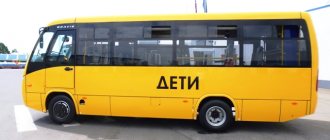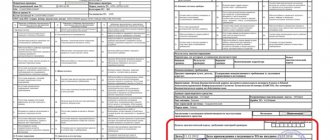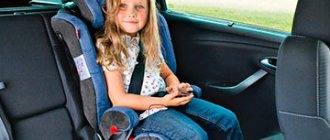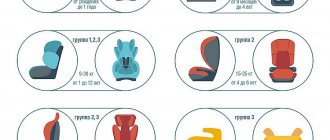Good afternoon, dear reader.
This article will discuss the rules for transporting groups of children on a bus . Over the past few years, several regulations related to this issue have been issued and amended. All of them were reviewed on pddmaster.ru.
This article contains generalized information and will be updated as legislation changes.
Please note that issues of organized transportation of children affect not only transport companies.
For example, if parents of schoolchildren want to organize an excursion for their children, then they will also have to comply with the transportation rules.
This article will discuss the documents required for transportation, requirements for buses and the people on them.
- traffic police document;
What is organized transportation of children?
Clause 1.2 of the traffic rules:
“Organized transportation of a group of children” - transportation on a bus that is not a route vehicle, a group of children of 8 or more people, carried out without their parents or other legal representatives.
Please note that organized transportation does not include:
- Children's ride on a minibus. For example, if children and their teacher go to the theater on trolleybus number 1.
- Transportation of 7 or less children.
- Transportation of 8 or more children and several parents, in which 7 or less children are traveling without parents.
Organized transportation includes transportation when:
- People travel on a bus that is not a route vehicle.
- Among the people there are at least 8 children whose parents are not present on the bus.
If the above conditions are met, then you should read this article to the end and study the transportation rules.
Participants of organized transportation
Currently, the list of persons who can participate in organized transportation is strictly limited. Clause 14 of the rules for transporting children by bus:
14. If a child or other person included in the list fails to appear, information about him or her is deleted from the list. In addition to the driver (drivers), other persons other than those indicated in the lists are not allowed on the bus. Monitoring compliance with these requirements is the responsibility of accompanying persons.
Only :
- driver(s);
- children included in the passenger list;
- accompanying persons included in the list of passengers;
- a medical worker included in the passenger list.
Please note that the legality of each person on the bus must be confirmed by an appropriate document. You cannot take a person on a trip without a document.
As an example, consider the following situation. The 11th grade of a secondary school is going on a tourist trip. At the same time, some students have reached the age of 18, i.e. they are not children. The rest of the class remains children. How to prepare documents in this case?
It's actually quite simple:
- Students under 18 years of age must be listed as children on the passenger list;
- Students over 18 years of age must be included on the passenger list as accompanying passengers.
Let's take a closer look at each of the trip participants.
Bus driver
The driver must meet the following requirements:
- working as a category D driver for 1 year out of the last 2 years (until January 1, 2021 - 12 out of the last 13 months);
- undergo pre-trip briefing;
- absence of punishment in the form of deprivation of rights or administrative arrest during the last year.
Children
Children under 18 years of age must be included as children on the passenger list.
Moreover, if there is at least one child under 7 years of age on the list, then the bus schedule must be drawn up so that the bus does not travel longer than 4 hours. That is, we are talking about the total duration of the trip. So it won’t be possible to take small children on long trips.
Accompanying
All accompanying persons must be included in the passenger list as accompanying persons.
Accompanying persons are assigned to each of the buses involved in transportation. The minimum number of accompanying persons is 1 person at each bus door intended for boarding.
If the bus has 2 doors, then there must be at least two accompanying people.
Note. From 1 January 2021, only 1 accompanying person is allowed on the bus if the group includes 20 children or less. In this case, passengers board and disembark through one door of the bus, near which there is an accompanying person.
The maximum number of accompanying persons is not limited.
For example, 8 children and 30 accompanying persons can travel on a bus.
One of the accompanying persons on each bus is designated as responsible.
a senior responsible escort is also appointed . Until October 1, 2019, the senior person in charge could only travel on the last bus in the convoy. After October 1, this requirement is canceled and the senior accompanying person can ride on any bus.
Adult passengers
All adult passengers on the bus must be included on the passenger list as companions.
Medical worker
A medical professional is only required if the trip meets both the following conditions:
- the trip is intercity (until January 1, 2021);
- the duration of the scheduled trip exceeds 12 hours;
- there are 3 or more buses in a convoy (from January 1, 2021).
From October 1, 2021, a medical worker can travel on any bus in the convoy. Previously, he was supposed to be on the last bus.
Documents Statistics on documents and execution of orders
GOVERNMENT OF THE RUSSIAN FEDERATION
RESOLUTION
dated September 23, 2021 No. 1527
MOSCOW
On approval of the Rules for the organized transportation of a group of children by bus
In accordance with Article 20 of the Federal Law “On Road Safety”, the Government of the Russian Federation decides:
1. Approve the attached Rules for the organized transportation of a group of children by bus.
2. Establish that the exercise of the powers of federal executive bodies provided for by this resolution is carried out within the limits of the maximum number of employees of federal executive bodies established by the Government of the Russian Federation, as well as the budgetary allocations provided for by them in the federal budget for leadership and management in the field of established functions.
3. This resolution comes into force on January 1, 2021 and is valid until January 1, 2027.
Chairman of the Government of the Russian Federation M. Mishustin
APPROVED by Decree of the Government of the Russian Federation dated September 23, 2021 No. 1527
RULES for organized transportation of a group of children by bus
1. These Rules define the requirements for the organization and implementation of organized transportation of a group of children by buses in urban, suburban and intercity traffic.
2. For the purposes of these Rules:
the concepts of “charterer”, “charterer” and “chartering agreement” are used in the meanings provided for by the Federal Law “Charter of Road Transport and Urban Ground Electric Transport”;
the concept of “organized transportation of a group of children” is used in the meaning provided for by the Traffic Rules of the Russian Federation, approved by Resolution of the Council of Ministers - Government of the Russian Federation of October 23, 1993 No. 1090 “On Traffic Rules”;
the concept of “medical worker” is used in the meaning provided for by the Federal Law “On the Fundamentals of Protecting the Health of Citizens in the Russian Federation” in relation to medical workers with higher and secondary vocational (medical) education.
3. If the organized transportation of a group of children is carried out by 1 bus or 2 buses, before the start of such transportation to the unit of the State Road Safety Inspectorate of the territorial body of the Ministry of Internal Affairs of the Russian Federation (hereinafter referred to as the State Traffic Inspectorate unit) at the district level at the place where the organized transportation of the group begins children are notified of the organized transportation of a group of children.
If the specified transportation is carried out by 3 buses or more, before the start of such transportation, an application is submitted to escort the buses by a patrol car (patrol cars) of the State Traffic Inspectorate unit:
if it is necessary to organize escort on public roads located on the territory of several municipalities within a constituent entity of the Russian Federation, closed administrative-territorial entities, several constituent entities of the Russian Federation - to the State Traffic Inspectorate unit at the regional level at the place where the organized transportation of a group of children begins or to a Special Purpose Center in the field of ensuring road safety of the Ministry of Internal Affairs of the Russian Federation, the Main Directorate for Ensuring Road Safety of the Ministry of Internal Affairs of the Russian Federation;
if it is necessary to organize escort on public roads located within districts, cities and other municipalities, closed administrative-territorial entities, the Baikonur complex - to the State Traffic Inspectorate unit at the district level at the place where the organized transportation of a group of children begins.
4. The notification provided for in paragraph 3 of these Rules is submitted by the person planning the organized transportation of a group of children (hereinafter referred to as the organizer of transportation), including the charterer or charterer (if transportation is carried out under a charter agreement), in accordance with the form established by the Ministry of Internal Affairs of the Russian Federation, subject to the provisions of these Rules.
The application provided for in paragraph 3 of these Rules is submitted by the organizer of transportation, including the charterer or charterer (if transportation is carried out under a charter agreement), in accordance with the Regulations on the escort of vehicles by cars of the State Road Safety Inspectorate of the Ministry of Internal Affairs of the Russian Federation and the Military Automotive Inspectorate, approved Decree of the Government of the Russian Federation of January 17, 2007 No. 20 “On approval of the Regulations on escorting vehicles by cars of the State Road Safety Inspectorate of the Ministry of Internal Affairs of the Russian Federation and the Military Automobile Inspectorate.”
5. Notification about the organized transportation of a group of children is submitted no later than 48 hours before the start of transportation in intercity traffic and no later than 24 hours before the start of transportation in urban and suburban traffic.
6. A notification about the organized transportation of a group of children may be submitted in relation to several planned organized transportations of a group of children along the same route, indicating the dates and times of such transportation.
Such notification is submitted before the start of the first of the transportations specified in it.
7. If, according to the schedule, the travel time of a bus during the organized transportation of a group of children exceeds 4 hours, children under 7 years of age are not allowed to be included in this group.
8. The transportation organizer assigns to each bus used for the organized transportation of a group of children persons accompanying the children throughout the trip (hereinafter referred to as accompanying persons). If the group includes more than 20 children, the minimum number of accompanying persons is determined based on their presence at each bus door intended for boarding (disembarking) children. It is allowed to appoint one accompanying person if the group includes 20 or fewer children and if children are boarded (disembarked) through one door of the bus.
9. If there are several accompanying persons on the bus, the transportation organizer appoints one of them responsible for the organized transportation of a group of children on the corresponding bus, who coordinates the actions of the driver (drivers) and other accompanying persons on the specified bus.
10. If 2 or more buses are used for the organized transportation of a group of children, the transportation organizer appoints a senior person responsible for the organized transportation of a group of children, who coordinates the actions of the drivers of these buses and those responsible for these buses.
11. If the duration of the organized transportation of a group of children exceeds 12 hours and 3 or more buses are used for its implementation, the organizer of the transportation ensures that such a group of children is accompanied by a medical worker. In this case, organized transportation of a group of children without a medical worker is not allowed.
12. At night (from 11 p.m. to 6 a.m.), organized transportation of a group of children to and from railway stations, airports, completion of the organized transportation of a group of children (delivery to the final destination determined by the schedule, or to a place of overnight rest) is allowed. unplanned deviation from the traffic schedule (if there is a delay in transit), as well as organized transportation of a group of children, carried out on the basis of legal acts of the highest executive bodies of state power of the constituent entities of the Russian Federation. Moreover, after 23:00 the transportation distance should not exceed 100 kilometers.
13. The transportation organizer draws up a list of persons other than the driver (drivers) who are allowed to be on the bus during transportation (hereinafter referred to as the list), including, inter alia:
children included in the group, indicating the last name, first name, patronymic (if any), age or date of birth of each child, as well as contact telephone numbers of his parents (legal representatives);
accompanying persons indicating their last name, first name, patronymic (if any) and contact telephone number;
medical worker indicating his last name, first name, patronymic (if available) and contact phone number.
During the organized transportation of a group of children, the person responsible for the organized transportation of a group of children or the senior person responsible for the organized transportation of a group of children must have a copy of the notice of a negative decision based on the results of consideration of the application for escorting buses with a vehicle (vehicles) of the State Traffic Inspectorate unit (when such a decision is made) or notifications about the organized transportation of a group of children and the list provided for in this paragraph.
14. If a child or other person included in the list fails to appear, information about him or her is deleted from the list. In addition to the driver (drivers), other persons other than those indicated in the lists are not allowed on the bus. Monitoring compliance with these requirements is the responsibility of accompanying persons.
15. A list containing adjustments is considered valid if it is certified by the signature of the person appointed:
responsible for the organized transportation of a group of children, if 1 bus is used for the organized transportation of a group of children;
the senior person responsible for the organized transportation of a group of children, if 2 or more buses are used to carry out the organized transportation of a group of children.
16. For organized transportation of a group of children, a bus equipped with seat belts is used.
17. The following drivers are allowed to drive buses carrying out organized transportation of a group of children:
a) who, on the date of the start of organized transportation of a group of children, have worked as a driver of a category “D” vehicle for at least one year out of the last 2 years;
b) who have undergone pre-trip instruction in accordance with the rules for ensuring the safety of transportation by road and urban ground electric transport, approved by the Ministry of Transport of the Russian Federation in accordance with paragraph two of paragraph 2 of Article 20 of the Federal Law “On Road Traffic Safety”;
c) who, within one year before the start of organized transportation of a group of children, were not brought to administrative responsibility in the form of deprivation of the right to drive a vehicle or administrative arrest for administrative offenses in the field of road traffic.
18. When carrying out organized transportation of a group of children, the driver must have with him a charter agreement (if the organized transportation of a group of children is carried out under a charter agreement) and a document drawn up in any form containing information about the transportation route, including:
a) point of departure;
b) intermediate points of embarkation (disembarkation) (if any) of children and other persons participating in the organized transportation of a group of children;
c) destination;
d) places of stops for meals, short rest, night rest (for multi-day trips) - in the case of organized transportation of a group of children in intercity traffic.
19. In the event of a delay in the departure of buses carrying out the organized transportation of a group of children, the transportation organizer notifies the parents (legal representatives) of the children and other persons involved in the organized transportation of the group of children, as well as the State Traffic Inspectorate unit, if they made a decision to escort these buses by a patrol officer car (patrol cars).
20. While the bus is moving, children must be fastened to their seats with seat belts adjusted in accordance with the vehicle operating manual. Monitoring compliance with this requirement is the responsibility of accompanying persons.
21. When moving a bus carrying out organized transportation of a group of children, a yellow or orange beacon must be turned on on its roof or above it, providing a visibility angle in the horizontal plane equal to 360 degrees.
22. In the event that it is impossible to carry out or continue to carry out the organized transportation of a group of children due to a traffic accident, a technical malfunction of the bus, an illness (injury) of the driver that arose during such transportation, or the fact of non-compliance of the bus with the requirements of these Rules is revealed, or the fact of the driver’s non-compliance with the requirements is revealed Clause 17 of these Rules, the transportation organizer or charterer (in case of organized transportation of a group of children under a charter agreement) is obliged to take measures to replace the bus and (or) driver.
The replacement bus must comply with the requirements of paragraph 16 of these Rules, and the replacement driver must comply with the requirements of paragraph 17 of these Rules.
Upon arrival of a replacement bus and (or) a replacement driver, the documents specified in paragraph 18 of these Rules are transferred to the driver of this bus. The driver and the person responsible (senior responsible) for the organized transportation of a group of children draws up an act of replacing the bus and (or) driver in any form, indicating the reasons for replacing the bus and (or) driver, the date and time of replacing the bus and (or) driver, last names, first names, patronymics (if available) and contact telephone numbers of the persons who signed such an act.
23. The originals of the documents specified in paragraphs 3, 13 and 18 of these Rules are stored by the organizer of transportation for 3 years from the date of completion of each organized transportation of a group of children, during which a road traffic accident occurred, as a result of which children were injured, in other cases - within 90 calendar days.
____________
Documents for organized transportation
Traffic police document
If transportation is carried out by one or two buses, then a copy of the traffic police notification .
Submitting a notification to the traffic police
If the transportation involves 3 or more buses, then a copy of the traffic police decision on assigning an escort or refusing to provide an escort is required. In case of a positive decision on the application, the convoy of buses is accompanied by one or more police vehicles.
List of all passengers
From October 1, 2021, all passengers can be included in a single list , that is, issuing separate lists for children, accompanying and adult passengers is not required.
For example, the list might look like this:
| Full Name | Additional Information | |
| child | Ivanov Ivan Ivanovich | Age: 12 years. Parents' phone number |
| accompanying | Petrov Petr Petrovich | Telephone |
| accompanying | Volkov Arkady Dmitrievich | Telephone |
When filling out information about children, instead of the “Age” column, the “Date of Birth” column can be used.
Note. If a medical professional is involved in the trip, he must also be included in the passenger list. In addition, a license to carry out medical activities or an agreement with a medical organization must be attached.
Driver's document
Attention! From January 1, 2021, an additional driver document is no longer required .
The driver's document must indicate his full name and telephone number. If there are several drivers, then the document indicates the details of each of them.
Please note that we are not talking about a driver's license. A separate document is required, which must be prepared by the transportation organizer.
In addition, you don’t have to issue if the documents include a copy of the traffic police notification about the transportation. Such notification is mandatory if the transportation involves 1 or 2 buses.
Procedure for boarding passengers on the bus
Attention! From January 1, 2021, passenger boarding procedures are no longer required .
The order of boarding passengers includes information about how exactly it is controlled that exactly the passengers from the list got on the bus:
- according to documents (official ID, travel voucher, student card);
- according to the list of passengers;
Transportation route
Transportation route information must include:
- point of departure;
- intermediate pick-up/drop-off points;
- destination;
- stopping places for food and rest.
Note. Before October 1, 2021, a traffic schedule was also required, which should have indicated the time of arrival at different points along the route.
Additional documents
Documents that the driver must have only in some cases:
- The charter agreement or a copy thereof (if such an agreement was concluded).
- List of a set of food products if children are traveling for more than 3 hours (until January 1, 2021).
Please note that the originals of all the documents listed above must be kept for 90 days from the date of the trip , and if an accident involving victims occurred during the trip, then for 3 years.
Bus for organized transportation
Paragraph 22.6 of the traffic rules:
22.6. Organized transportation of a group of children must be carried out in accordance with these Rules, as well as the rules approved by the Government of the Russian Federation, on a bus marked with identification marks “Transportation of Children”.
requirements apply to the bus :
- Installation of a sign “Transportation of children”. The sign is installed in front and behind the bus.
- Turn on a yellow or orange beacon (starting from July 1, 2021).
- The bus must be equipped with seat belts (from October 1, 2021).
In addition, a bus for the organized transportation of children must meet the requirements for all buses for the transportation of passengers:
- The bus must comply in terms of purpose and design with the technical requirements for the transportation of passengers.
- The bus must be permitted to participate in road traffic.
- Installation of tachograph.
- Installation of GLONASS or GLONASS/GPS satellite navigation equipment (not valid from March 19 to May 31, 2021).
Bus requirements
As mentioned earlier, the requirements for buses are largely disclosed in GOST 33552-2015. Of these, a number of the following requirements applicable to vehicles can be identified:
- Vehicles whose maximum speed exceeds 60 km/h are equipped with a speed limiting device.
- Identification signs “Transportation of children” are installed in the front and rear parts in accordance with the traffic regulations in force in the countries of the Customs Union members.
- In addition to the sign for the bus, the words “Children” are written on all sides. The font of letters and their size are determined by this document.
- The body color is bright yellow.
- When reverse gear is engaged, a beep should sound in automatic mode.
- Identification signaling devices are installed on the top of the front and rear panels.
- When driving, a yellow or orange flashing light must be turned on on the roof of the bus (in accordance with Government Decree No. 1621, paragraph 2 of December 23, 2017, comes into force on July 1, 2018).
In addition to the presented characteristics, the bus must meet numerous other requirements disclosed in the above-mentioned GOST 33552-2015, in particular:
- Conditions related to the interior layout, for example, the mandatory installation of passenger seats strictly in the direction of travel of the vehicle, the presence of a “Request to Stop” button in each row and other requirements.
- The requirements for the seats, the dimensions of which are shown in the image, allow, at the discretion of the manufacturer, to equip them with seats with the ability to attach child restraints, which allows us to talk about ensuring safety on the road:
- The width of the cushion for a single seat is at least 32 cm;
- the width of the cushion for a single seat with child restraint fixation elements (child restraint) is not less than 45 cm;
- backrest height – not less than 75 cm, without load;
- the seat closest to the central aisle should have an armrest or handrails;
- The vehicle is equipped with at least 2 seats for accompanying adults. They are installed in such a way that it is possible to constantly visually monitor all small passengers.
- Requirements relating to entry and exit from the vehicle, varying depending on the number of passengers and affecting the smallest details down to the following nuances:
- mandatory lighting of entrance openings;
- the height and depth of the lower and subsequent steps;
- the location of handrails and handles relative to each step;
- the presence of a system that blocks the start of movement when the doors are open.
In addition, you should take into account the mandatory presence of a CIPF tachograph and GLONASS or GLONASS/GPS satellite navigation equipment, as well as the age of the vehicle, which was mentioned earlier.
These conditions are mandatory for all vehicles belonging to categories M2 and M3 intended for the transport of minors.









